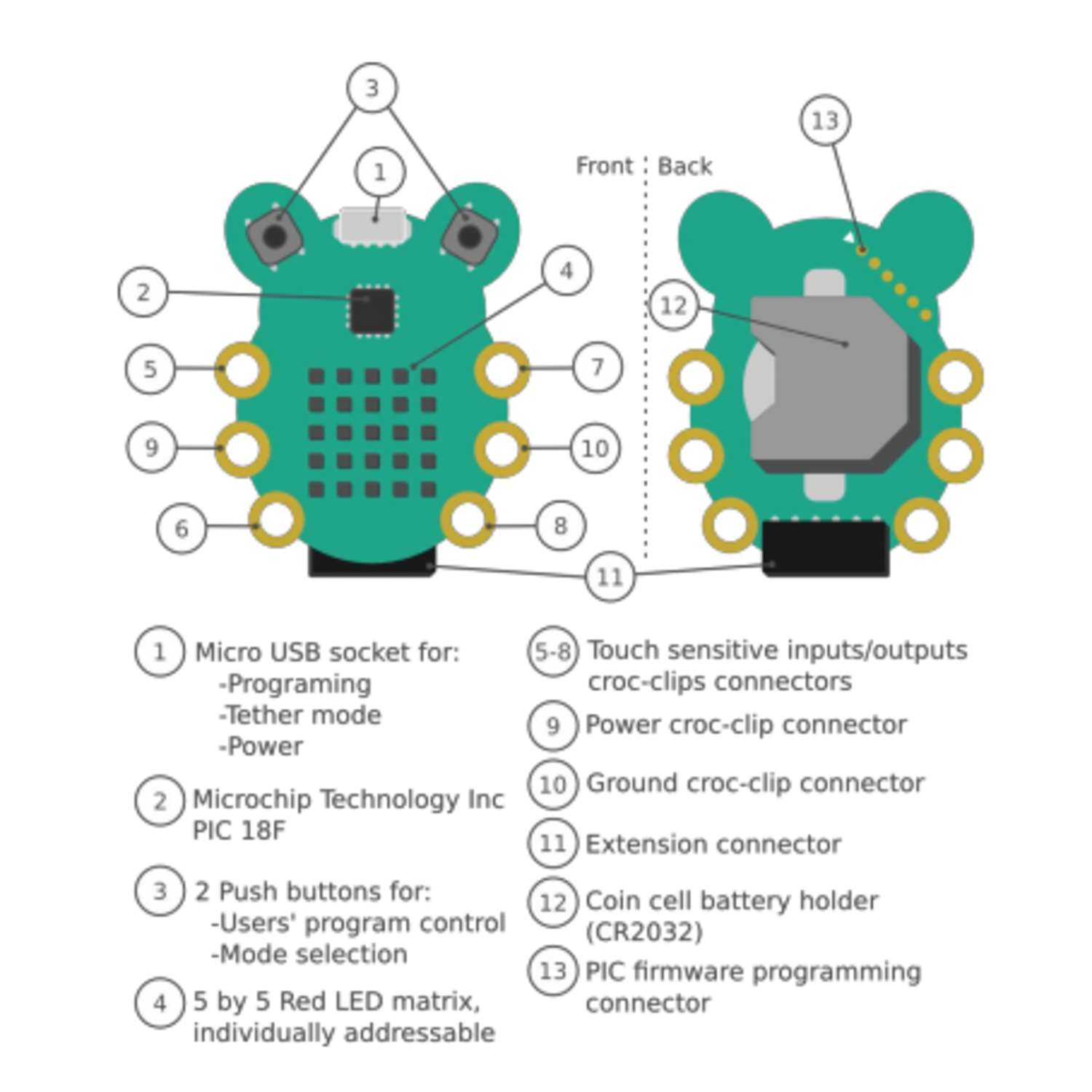CodeBug is an adorable, programmable and wearable gadget. It's a great tool for people of all ages to learn basic programming and electronic concepts. You can easily program it via the online interface. It has colorful drag - and - drop blocks, an in - browser emulator, and a fun community. Unleash your creativity and make your own games, clothes, robots, or any wild inventions! CodeBug comes with six electrical legs. You can connect external electronic components like LEDs and switches using croc - clips, banana - plugs or conductive thread. The middle two legs supply power, and you can set the other four as inputs or outputs in your code. What's in the box? You'll get a CodeBug, a microB USB cable for programming and power, and a quick - start guide. It's compatible with Windows, Mac OSX, and Linux. No need to install drivers; it shows up as a portable disk. Check out the awesome projects on the CodeBug learning center. Features include a 25 - LED display (5 x 5 red pixels), 2 buttons, the option to use a cell battery for mobile projects, 4 touch - sensitive I/O pads, a Micro USB socket, an expansion port for I2C, SPI and UART, a Blockly - based online programming interface, a CodeBug emulator for pre - download code checking, online project storage and sharing, tethered mode for computer - CodeBug interaction, and step - by - step guides. For more info, refer to the CodeBug Quick Start Guide pages 1 and 2. Find detailed specifications in the datasheet.

Using CodeBug is a breeze. First, connect it to your computer using the provided microB USB cable. It'll show up as a portable disk, so no need to worry about installing drivers. To program it, head to the online interface. You can use the colorful drag - and - drop blocks to write your code. There's also an in - browser emulator, so you can check your code before downloading it to CodeBug. When it comes to connecting external components like LEDs or switches, use croc - clips, banana - plugs, or conductive thread to attach them to the six electrical legs. The middle two legs give power, and you can set the other four as inputs or outputs in your code. If you want to make your projects mobile, you can use a cell battery. There are great projects on the CodeBug learning center to inspire you. Just follow the step - by - step guides. As for maintenance, keep it clean and dry. Don't expose it to extreme temperatures or moisture. If you have any questions, check the CodeBug Quick Start Guide pages 1 and 2 or the datasheet for detailed info.